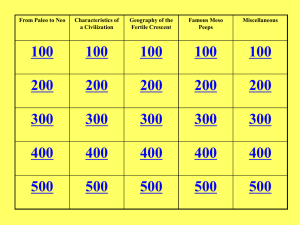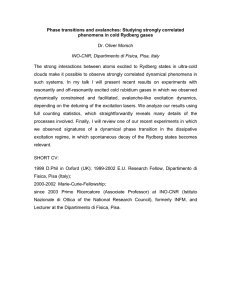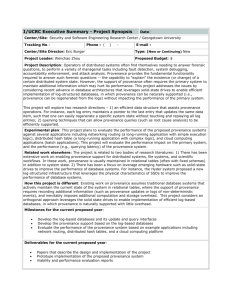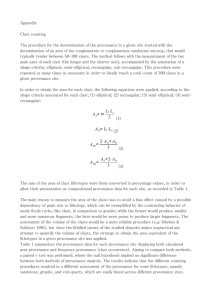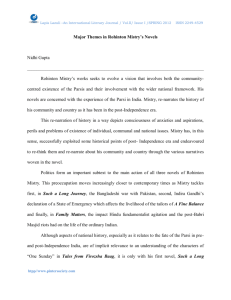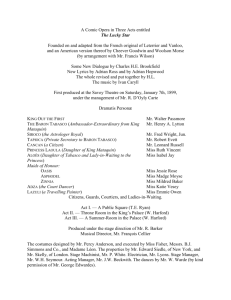Angelici et al - Associazione Italiana di Archeometria
advertisement
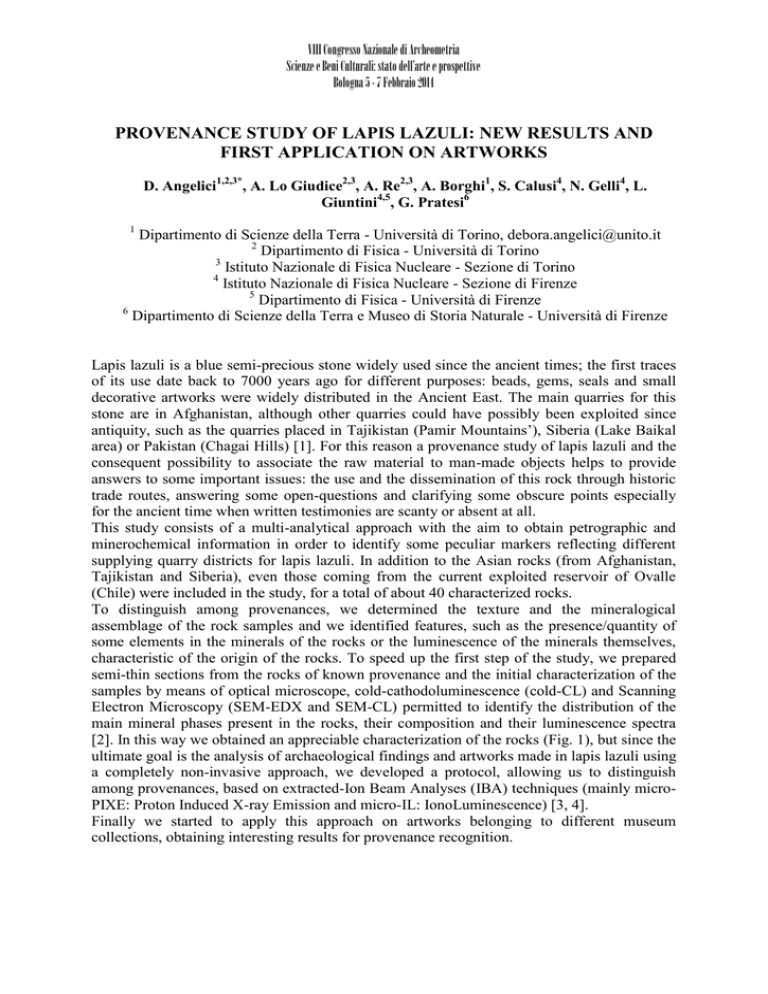
VIII Congresso Nazionale di Archeometria Scienze e Beni Culturali: stato dell’arte e prospettive Bologna 5 - 7 Febbraio 2014 PROVENANCE STUDY OF LAPIS LAZULI: NEW RESULTS AND FIRST APPLICATION ON ARTWORKS D. Angelici1,2,3*, A. Lo Giudice2,3, A. Re2,3, A. Borghi1, S. Calusi4, N. Gelli4, L. Giuntini4,5, G. Pratesi6 1 Dipartimento di Scienze della Terra - Università di Torino, debora.angelici@unito.it 2 Dipartimento di Fisica - Università di Torino 3 Istituto Nazionale di Fisica Nucleare - Sezione di Torino 4 Istituto Nazionale di Fisica Nucleare - Sezione di Firenze 5 Dipartimento di Fisica - Università di Firenze 6 Dipartimento di Scienze della Terra e Museo di Storia Naturale - Università di Firenze Lapis lazuli is a blue semi-precious stone widely used since the ancient times; the first traces of its use date back to 7000 years ago for different purposes: beads, gems, seals and small decorative artworks were widely distributed in the Ancient East. The main quarries for this stone are in Afghanistan, although other quarries could have possibly been exploited since antiquity, such as the quarries placed in Tajikistan (Pamir Mountains’), Siberia (Lake Baikal area) or Pakistan (Chagai Hills) [1]. For this reason a provenance study of lapis lazuli and the consequent possibility to associate the raw material to man-made objects helps to provide answers to some important issues: the use and the dissemination of this rock through historic trade routes, answering some open-questions and clarifying some obscure points especially for the ancient time when written testimonies are scanty or absent at all. This study consists of a multi-analytical approach with the aim to obtain petrographic and minerochemical information in order to identify some peculiar markers reflecting different supplying quarry districts for lapis lazuli. In addition to the Asian rocks (from Afghanistan, Tajikistan and Siberia), even those coming from the current exploited reservoir of Ovalle (Chile) were included in the study, for a total of about 40 characterized rocks. To distinguish among provenances, we determined the texture and the mineralogical assemblage of the rock samples and we identified features, such as the presence/quantity of some elements in the minerals of the rocks or the luminescence of the minerals themselves, characteristic of the origin of the rocks. To speed up the first step of the study, we prepared semi-thin sections from the rocks of known provenance and the initial characterization of the samples by means of optical microscope, cold-cathodoluminescence (cold-CL) and Scanning Electron Microscopy (SEM-EDX and SEM-CL) permitted to identify the distribution of the main mineral phases present in the rocks, their composition and their luminescence spectra [2]. In this way we obtained an appreciable characterization of the rocks (Fig. 1), but since the ultimate goal is the analysis of archaeological findings and artworks made in lapis lazuli using a completely non-invasive approach, we developed a protocol, allowing us to distinguish among provenances, based on extracted-Ion Beam Analyses (IBA) techniques (mainly microPIXE: Proton Induced X-ray Emission and micro-IL: IonoLuminescence) [3, 4]. Finally we started to apply this approach on artworks belonging to different museum collections, obtaining interesting results for provenance recognition. VIII Congresso Nazionale di Archeometria Scienze e Beni Culturali: stato dell’arte e prospettive Bologna 5 - 7 Febbraio 2014 Fig. 1. Optical microscopy (OM), BS electron microscopy (SEM-EDX) and µ-PIXE elemental maps of a representative area of an afghan sample and nickel-copper contents in pyrite from µ-PIXE measurements [4] References [1] Casanova, M., 2013. Le lapis-lazuli dans l’Orient Ancien: production et circulation du néolithique au IIe millénaire AV. J.-C. Editions du Comité des travaux historiques et scientifiques, Paris. [2] A. Lo Giudice, A. Re, S. Calusi, L. Giuntini, M. Massi, P. Olivero, G. Pratesi, (2009). Multitechnique characterization of lapis lazuli for provenance study, Analytical and Bioanalytical Chemistry, 395: 2211-2217. [3] A. Re, A. Lo Giudice, D. Angelici, S. Calusi, L. Giuntini, M. Massi, G. Pratesi, (2011). Lapis lazuli provenance study by means of micro-PIXE, Nuclear Instruments and Methods in Physics Research B, 269(20): 2373-2377. [4] A. Re, D. Angelici, A. Lo Giudice, E. Maupas, L. Giuntini, S. Calusi, N. Gelli, M. Massi, A. Borghi, L.M. Gallo, G. Pratesi, P.A. Mandò, (2013). New markers to identify the provenance of lapis lazuli: trace elements in pyrite by means of micro-PIXE, Applied Physics A 111(1): 69-74.
